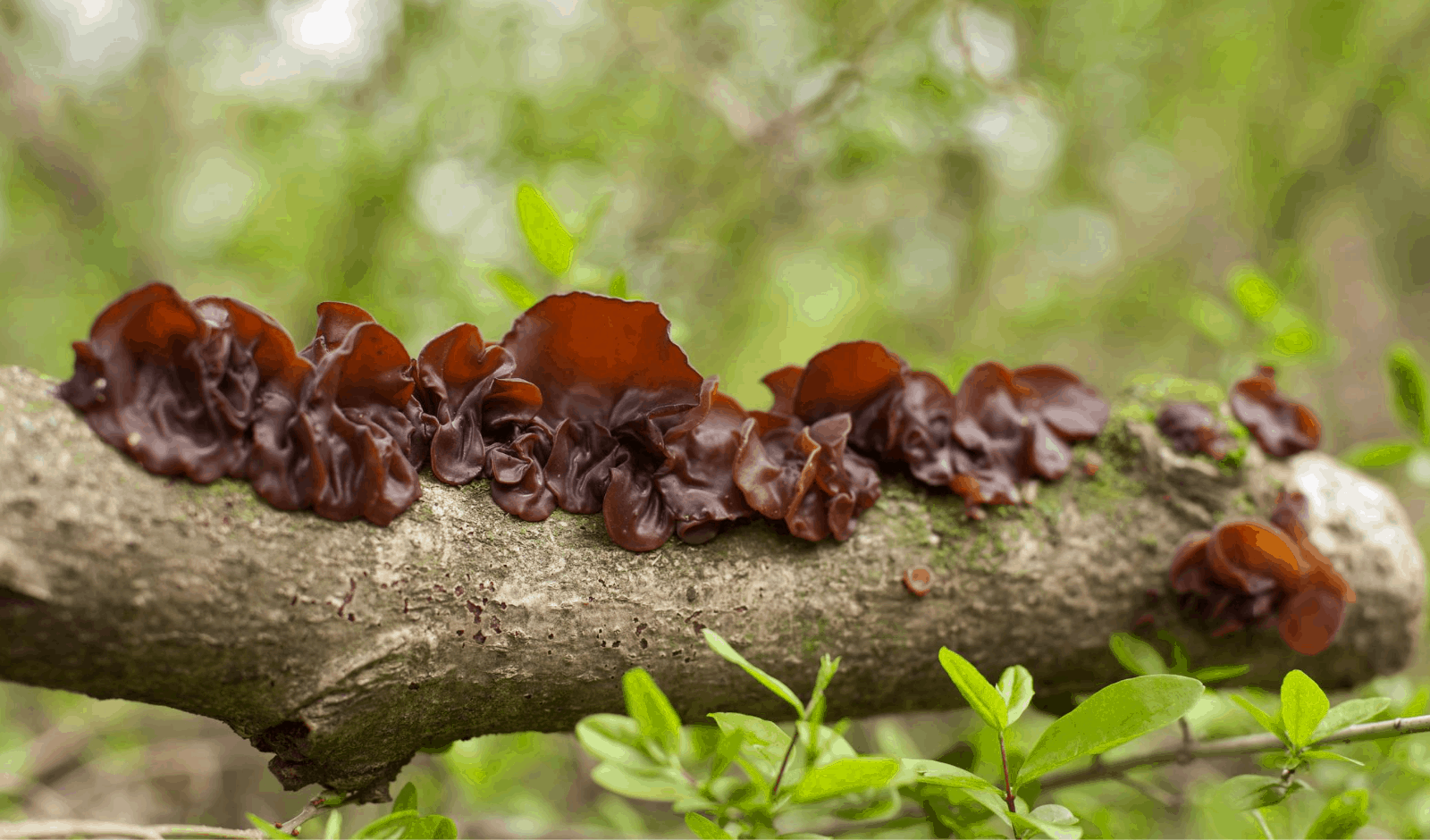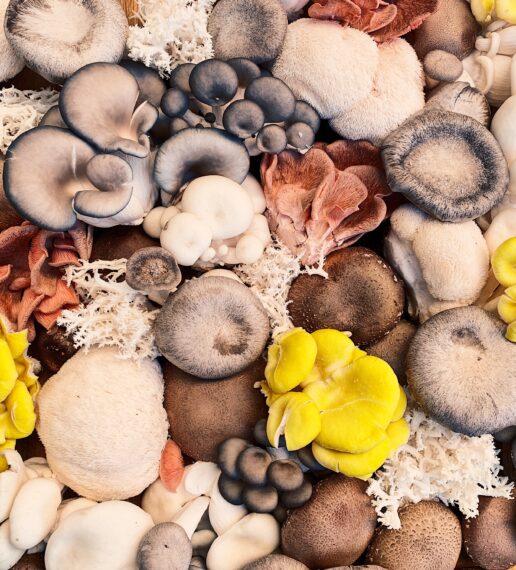5 Medicinal Mushrooms You’ve Never Heard Of (Benefits and More)
Medicinal mushrooms are all special and unique in their own way.
But some get more attention than others.
In this article, I wanted to take a look at some of the less-popular, but still super powerful and interesting medicinal mushrooms.
1. Enoki (Flammulina velutipes)

Enoki has been cultivated for a really long time, with methods of cultivation dating back all the way to the year 800!
It is a delicious gourmet mushroom that is grown in low light and low fresh air environments purposely to get that thin-stemmed look. It can be used in a number of dishes, and has great flavor and texture.
The wild variety of Enoki looks completely different than the cultivated version. It is orange/brown in color and has way bigger caps.
Enoki contains protein bound polysaccharides known as flammulin and proflammin, that have been extracted and researched for a number of health benefits*.
Proflammin is orders of magnitude lighter than most other beta-glucans found in mushrooms, (because it contains way more protein than sugar) which means it can act as a much more efficient immune system modulator*. [1]
Enoki has also been researched for its potential to prevent serious food allergies, or at least reduce the severity of food allergy reactions*. [2]
There was also an interesting study done on cancer death rates of Enoki farmers in Nagano, Japan*.
They studied 174,505 inhabitants and found that the cancer death rate for Enoki farmers was significantly lower at 97 per 100,000 compared to 160 per 100,000*. [3]
2. Wood Ear (Auricularia auricula)
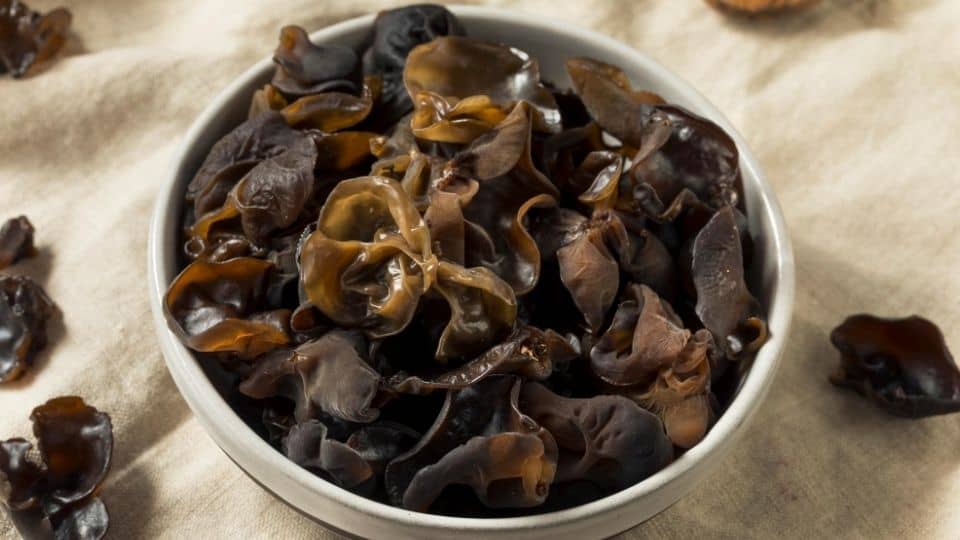
This mushroom really does look like an ear, and it grows on wood, which is why it gets the common name “Wood Ear” mushroom.
It is typically used in soups, and has a tough jelly like texture. It is prized in Asian cooking.
This mushroom also has some interesting medicinal properties*. It is thought to act as a powerful antioxidant, and possess cardio-protective properties*. [4]
3. Tremella (Tremella fuciformis)
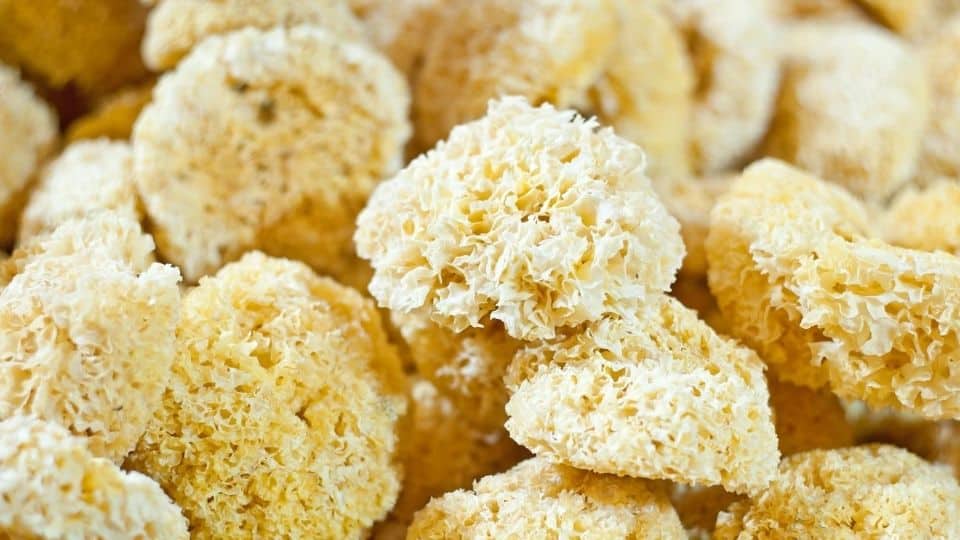
Tremella fuciformis, also called “Snow fungus” is known as the “beauty mushroom”.
It is a popular culinary mushroom that also has some interesting medicinal properties including skin health, potential wound healing, and the ability to support cognitive function*. [5]
The main bioactive components are polysaccharides, with the principal polysaccharide being something called glucuronoxylomannan*. [6]
You may find Tremella in a number of beauty products because of its ability to help retain moisture in the skin*.
4. Agaricus blazei
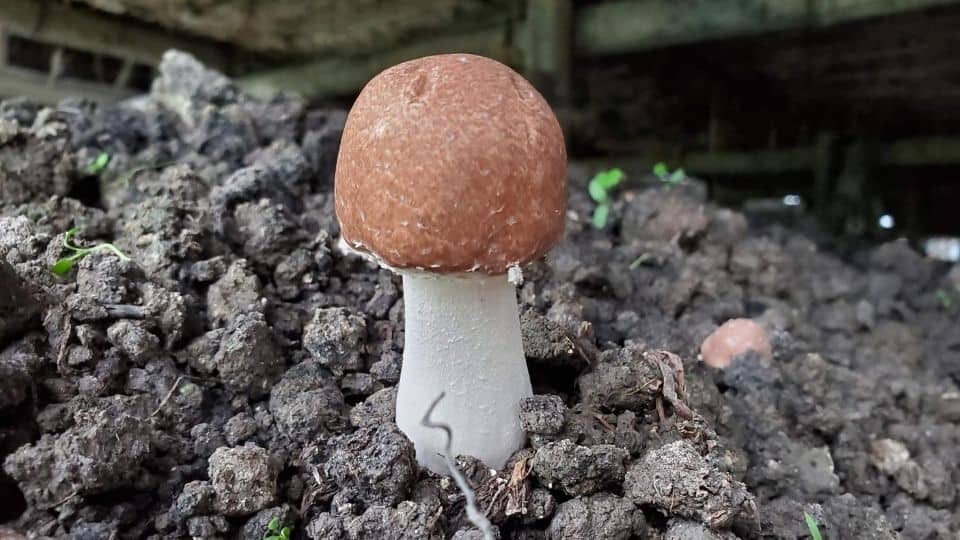
This mushroom is a close relative to the common button mushroom, Agaricus bisporus.
It grows on beds of compost and reeds, and can grow in warmer climates.
Agaricus blazei contains a wide variety of immune supporting polysaccharides, similar to many other medicinal mushrooms*.
This mushroom has shown potential for allergies*.
Studies done on mice with an extract that contains mostly Agaricus Blazei at 82% was shown it reduced the risk of allergic reactions*. [7]
5. Oyster Mushrooms (Pleurotus ostreatus)
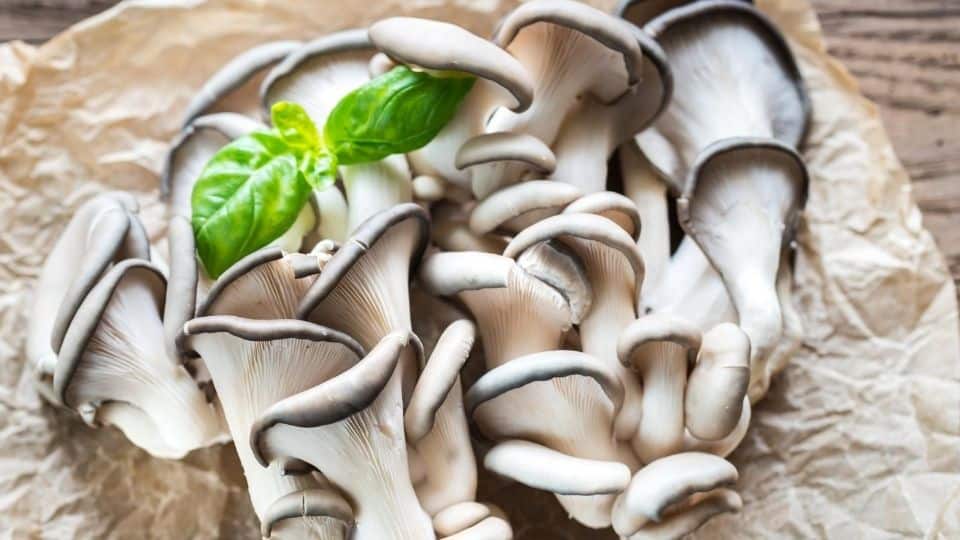
Of course, you’ve very likely heard of Oyster mushrooms. They are one of the most popular gourmet mushrooms in the world!
But you may be less familiar with the fact that Oyster mushrooms are also a powerful medicinal mushroom*.
One of the most interesting things about Oyster mushrooms is that they have a high ergothioneine content. [8]
Ergothioneine, a naturally occurring amino acid that is acquired exclusively through the diet, found in highest concentrations in mushrooms and bacteria (beef, pork, lamb, chicken). Humans produce a highly specific transport protein that makes it bioavailable in the human body.
It is shown to scavenge oxygen radicals and other reactive oxygen species suggesting that it can act as an antioxidant and possibly support the body’s anti-inflammatory processes*.
Because of its dietary origin and the toxicity associated with its depletion, ergothioneine may represent a new vitamin whose physiologic roles include antioxidant cytoprotection*. [9]
Oyster mushrooms have also been studied for their ability to help with cholesterol, especially animal studies showing P. ostreatus having the ability to produce improvements in blood lipid levels at 5 % of the diet*. [10]
